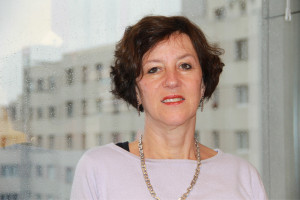Sophie Le Coeur
Questions on World AIDS Day

Sophie Le Cœur is a researcher at INED and CEPED (Centre Population et Développement) and heads a research project on AIDS in Southeast Asia, particularly Thailand (interview from November 2013).
Why focus on AIDS in Thailand?
Thailand was the first Asian country severely hit by the AIDS
epidemic, in the late 1980s. More than a million persons have been
infected there since the onset of the epidemic, and it has had
major demographic consequences: half a million people have died,
above all young adults, in a population of slightly over 60
million. In addition to prevention campaigns targeting the public
at large, there is a government-run program to combat AIDS based on
the understanding that together with patient treatment and
anti-discrimination measures, research-clinical, epidemiological,
but also social science research-is fundamental to combating the
disease. Thanks to this government program, and active application
of research results, Thailand is one of the few countries to have
reversed the epidemic trend-as early as the mid-1990s. Thailand’s
battle against the epidemic may therefore be considered exemplary-a
model.
INED has been involved in research studies with the IRD (Institut
de Recherche pour le Développement) to improve strategies for
preventing mother-to-child transmission of HIV. The research
results were applied immediately in Thailand, thereby considerably
reducing the number of children born with HIV. What’s more, our
results have provided the basis for WHO recommendations to
countries with limited resources. INED is also participating in
programs for optimising adult and child treatment for HIV.
Lastly, INED and the IRD have initiated a research project funded
by Sidaction, for assessing the living conditions of teenagers born
HIV positive in Thailand. Being HIV-positive makes adolescence a
particularly painful time of life. How are these young people to
deal with their new sexuality? How can they acquire the
self-confidence needed to start out in adult life when they are so
often stigmatised? How can they overcome the effects or
after-effects of the disease? It happens that young people entering
adolescence stop taking their medication and so endanger their own
lives, as shown by the jump in mortality observed for this life
period.
What is the AIDS situation across the world and in France at this time?
In its 2012 report, UNAIDS estimated the number of HIV-infected
persons in the world at 35.3 million, 25 million of whom are in
Africa and slightly under 5 million in Asia. Also in 2012, there
were an estimated 2.3 million cases of new infection (33% less than
in 2001) and 1.6 million deaths.
According to data from France’s Institut de Veille Sanitaire
(InVS), there were approximately 150,000 persons living with HIV in
France in 2012. Of the 6,100 persons who discovered they were
HIV-positive that same year, 40% were men who had had sexual
relations with men. The hardest-hit regions were Ile de France, the
Côte d’Azur and French Guyana.
Can you tell us about recent progress in the area of AIDS research?
Antiretrovirals have dramatically reduced HIV/AIDS-related morbidity and mortality, turning HIV infection into a chronic disease. In the last years the number of infected persons benefiting from these treatments has risen sharply: nearly 10 million persons worldwide in 2012.
Two major advances have been made in recent years:
The first, early treatment, not only enables infected persons to
live better and longer but has also been found to lower
transmission significantly, slowing the spread of the epidemic. The
WHO now recommends getting infected persons on treatment earlier.
With this in mind, a new strategy is being used in several
countries with high HIV prevalence: all pregnant women who test
positive for HIV are offered a simple antiretroviral treatment for
life. In addition to preventing mother-to-child transmission, this
strategy appears to reduce the rate of transmission to HIV-negative
partners and may ultimately work to limit the spread of the
epidemic.
The second is the prospect of being "cured" of the infection. A
small number of persons treated extremely quickly after becoming
infected and whose treatment was then interrupted are in good
health and there is no trace of the virus in their blood. The
prospect of being "cured"-still exceptional-has raised great hopes,
whereas up to now the only thing that allows infected persons to
have a nearly normal life is life-long treatment and they still
have to cope with new challenges, such as early ageing, a
phenomenon we have not yet been able to explain very
well.
